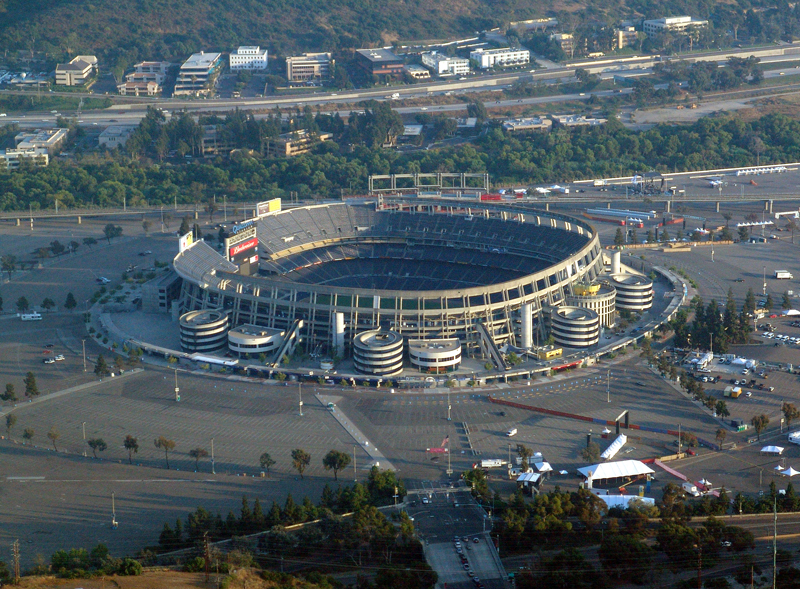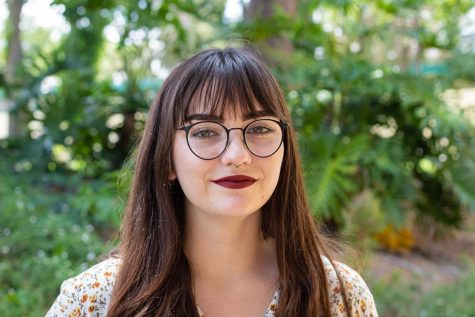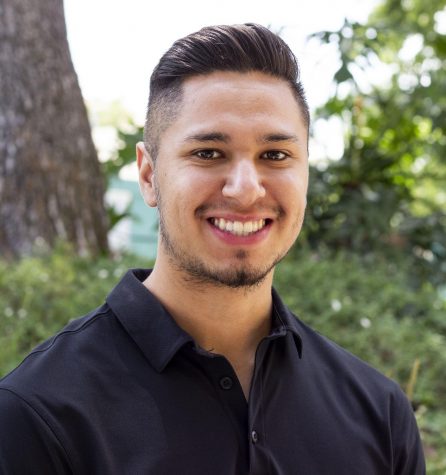On Nov. 6, voters in the city of San Diego will take to the polls and likely see a ballot full of unfamiliar names, measures and propositions. Measure G and Measure E, though, are likely very familiar to voters at this point in the election cycle.
Whichever measure passes could determine the fate of the SDCCU Stadium site, the sea of concrete situated on the east end of Mission Valley that has been a topic of discussion ever since the Chargers announced they would be packing their bags and moving north to Los Angeles in January 2017. Since then, aside from a number of Aztec football games, the site has been home to little more than the occasional concert, a few used car sales and a weekly swap meet.
Below, two proposed plans for the redevelopment of the site have been laid out. Although it is possible for both measures to fail, it is likely one of the two will pass and dictate the future of San Diego for years to come.
Measure G, the SDSU West Initiative
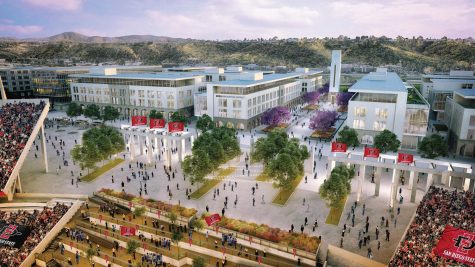
The SDSU West initiative, or Measure G, is a citizen’s initiative that earned its spot on the November ballot through signature collection by the group Friends of SDSU, which is unaffiliated with San Diego State, though many of its members are SDSU alumni and stakeholders. The measure would permit the city of San Diego to sell the 132-acre SDCCU Stadium site to SDSU or any SDSU auxiliary organization.
The measure would amend the San Diego Municipal Code, creating a process by which the sale of the land to the university would occur. The measure permits that the land would be purchased at a cost that the city deems fair and equitable in the public interest, a price that would be determined at a public meeting and must be based on the land’s value as of Oct. 9, 2017.
SDSU plans to develop a river park, classrooms, research space, a new stadium, housing, a hotel, retail space and transit improvements should the university acquire the site, either through Measure G or other action by the city. Through this plan, the current SDCCU Stadium would be demolished for the development of a new stadium.
The measure does not permit the sale of the land specified for the development of the river park. It would allow development of 50 acres of space for the river park, but the land itself would still belong to the city. The measure’s plan includes 75 acres of open space and four miles of trails for hiking and biking.
For students, the university plans to develop about 1.6 million square feet of campus space, including additional classrooms and research facilities. The measure also has plans to establish 4,600 housing units for students, faculty and members of the public that will be mixed in price from affordable to market-rate units.
The university also plans to develop a 250-room hotel overlooking the new stadium as well as a 150 room select-service hotel. The university has noted the hotel could be put to use as a space for professional development for hospitality students at SDSU. SDCCU stadium would be demolished as part of this plan, being replaced by a 35,000-seat stadium to host Aztec football and potentially professional soccer. The stadium design leaves open the possibility of expansion should the NFL return to San Diego.
Lastly, approximately 95,000 sq. ft. of retail space would be developed near the stadium. The space would include a mix of businesses, with spaces dedicated to both tourist and residential needs.
The San Diego County Taxpayers Association estimates the project would generate $1.9 million in tax revenue annually, producing a net figure of $188.1 million for the city over 99 years.
Measure E, the SoccerCity Initiative
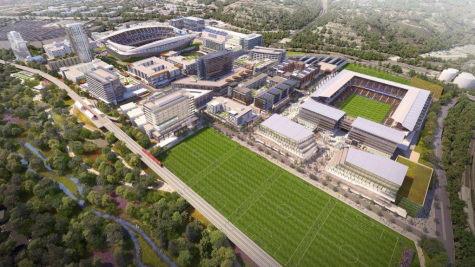
The SoccerCity initiative, or Measure E, would permit the acquisition of the Mission Valley site by the La Jolla-based group FS Investors, which is looking redevelop the area in hopes of bringing a Major League Soccer team to San Diego.
The measure would allow the lease of the SDCCU Stadium site to FS Investors for 99 years. The city’s municipal code would also change, allowing the city to lease the land and modify development requirements.
The rental cost for the land would equate to the value of the leasehold interest of the properties as of March 2, 2017, and would require the mayor’s office to determine this value. The plan would not require an approval by the City Council or a public hearing.
If no soccer franchise applies for a lease within one year of the measure’s effective date, the city may begin to accept applications from outside entities, such as a collegiate football team or another professional sports team in the San Diego market. The measure also sets aside 16 acres for a potential, second stadium to be used by another professional football franchise if one ever chooses to return to San Diego.
Measure E would also permit the lease of the 20 acres of land off Murphy Canyon Road that houses a former Chargers practice facility. The building would be potentially be repurposed to accommodate athletes with numerous practice fields.
The site would also include a 34-acre river park, 12 acres of sports fields and nine acres of neighborhood parks, 740,000 sq. ft. of retail space and hotels, 2.4 million sq. ft. of office space and 4,800 residential units.
The measure is explicit in calling for the purchase of the river parkland from the city, something the opposing Measure G does not call for.
The retail space the plan is proposing would primarily take the form of an expansive entertainment district as opposed to businesses focused on more residential needs, such as grocery stores.
The San Diego County Taxpayers Association estimates the net annual tax revenue from the plan would equate to $4 million. Over 99 years, the project is estimated to net $396 million for the city.











